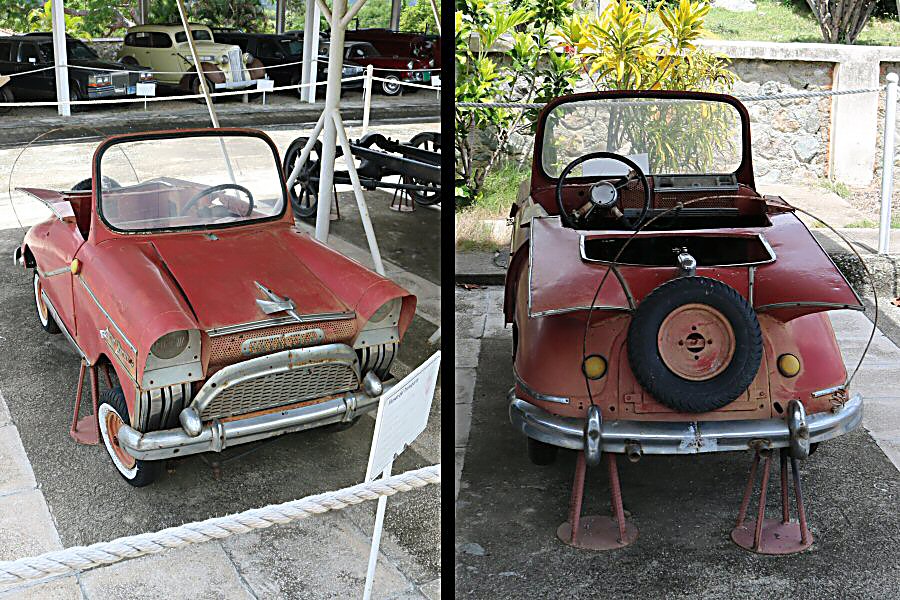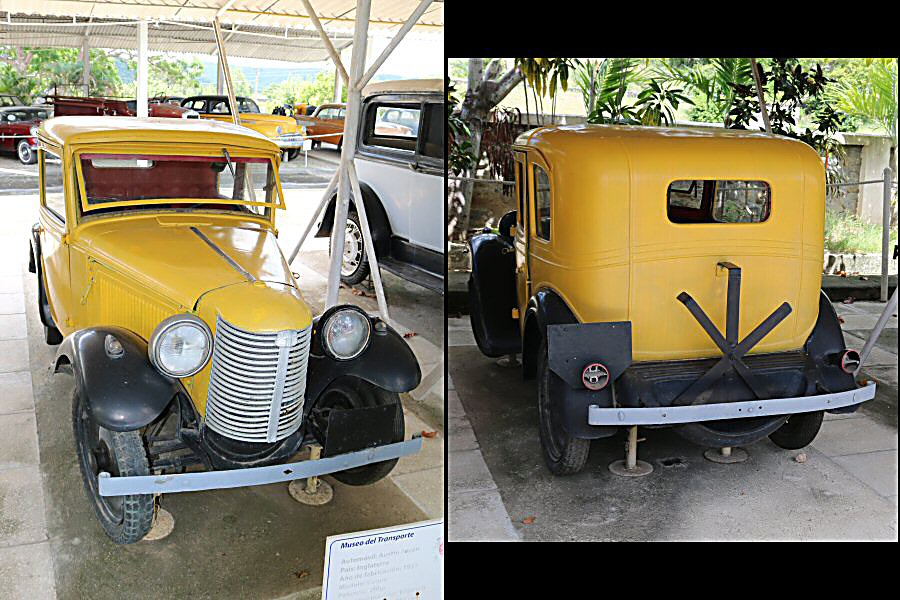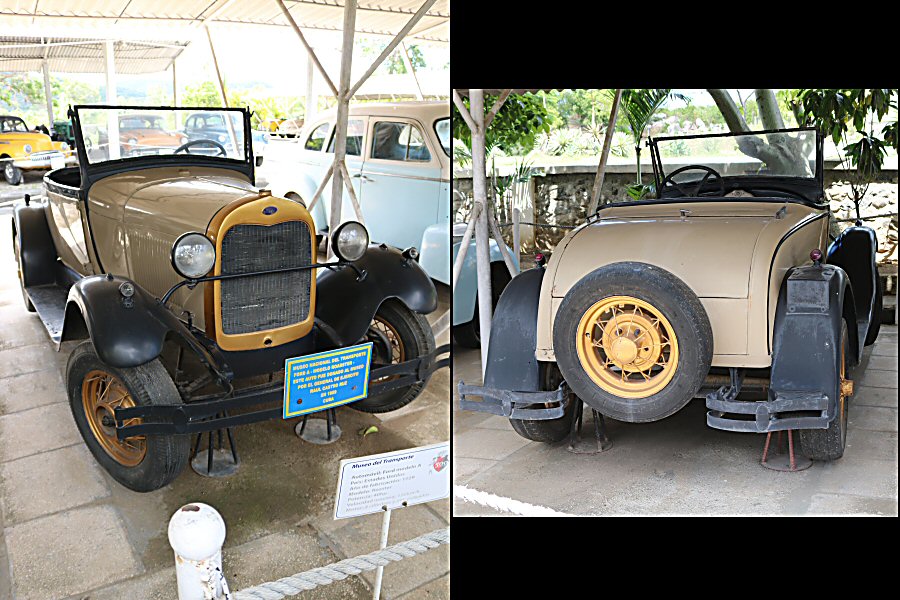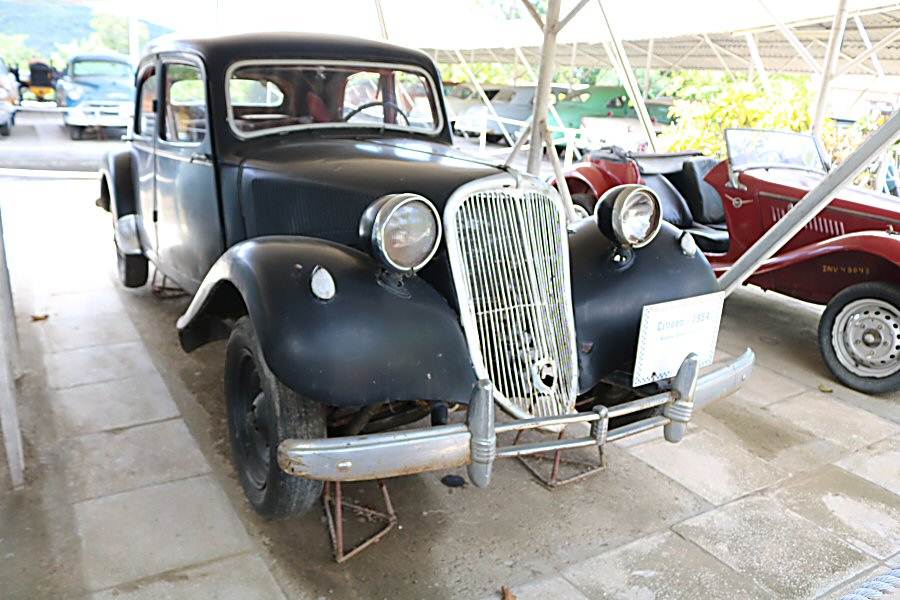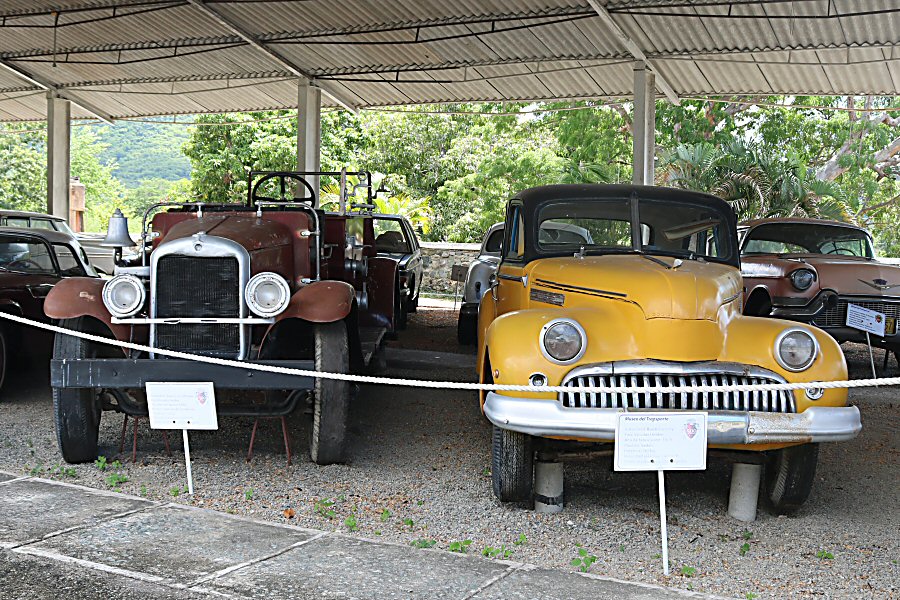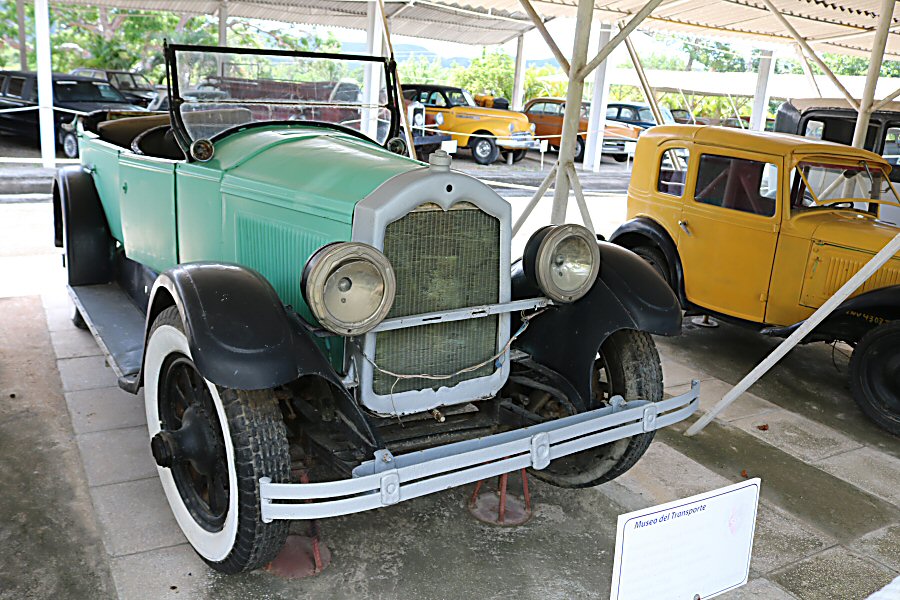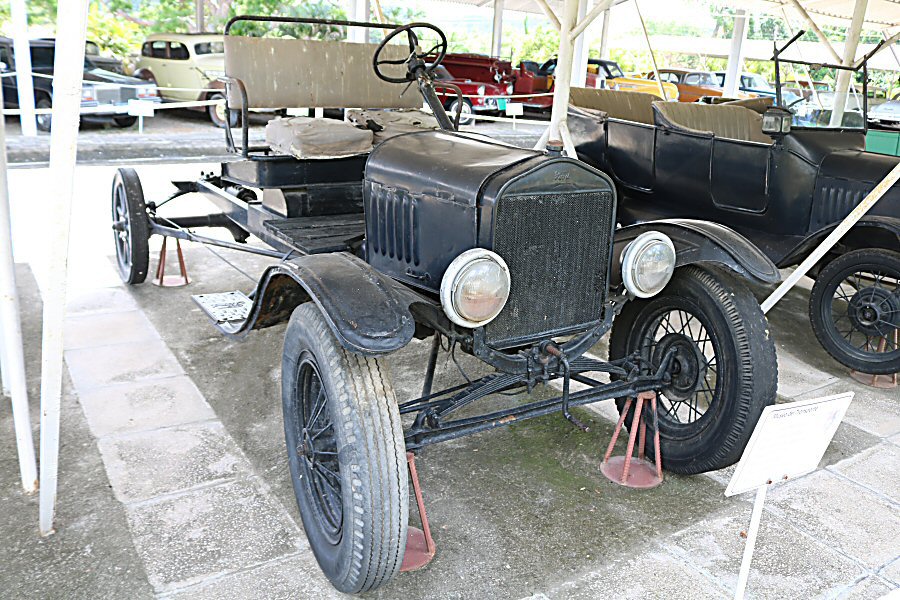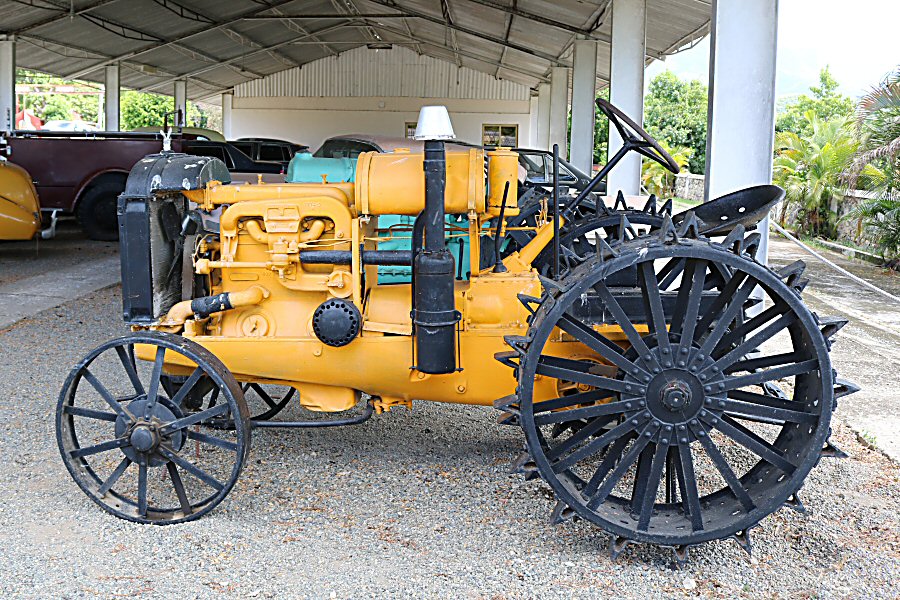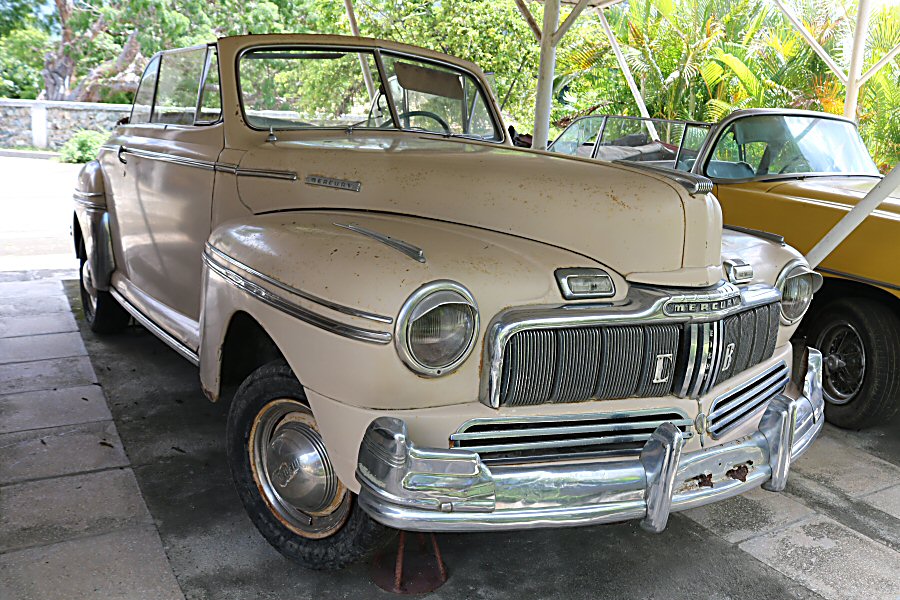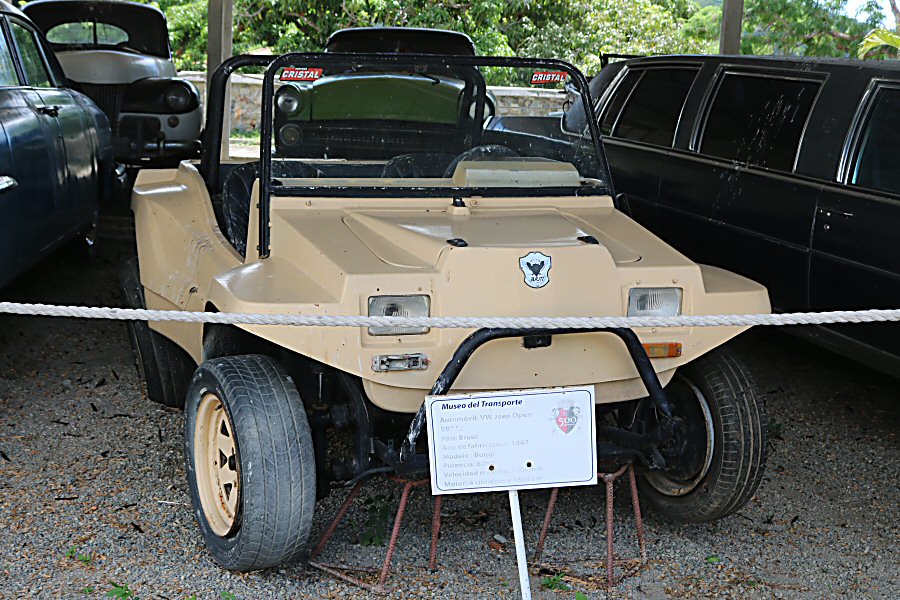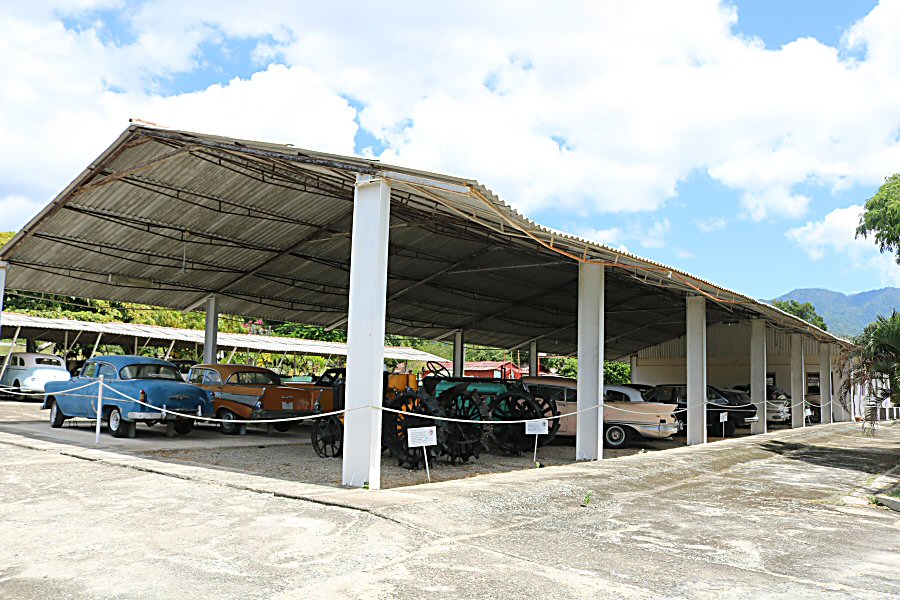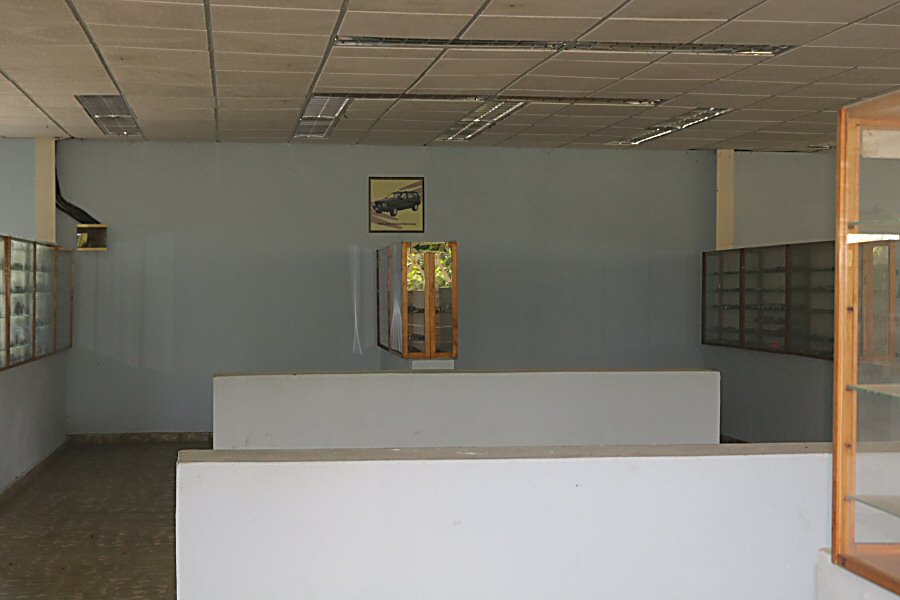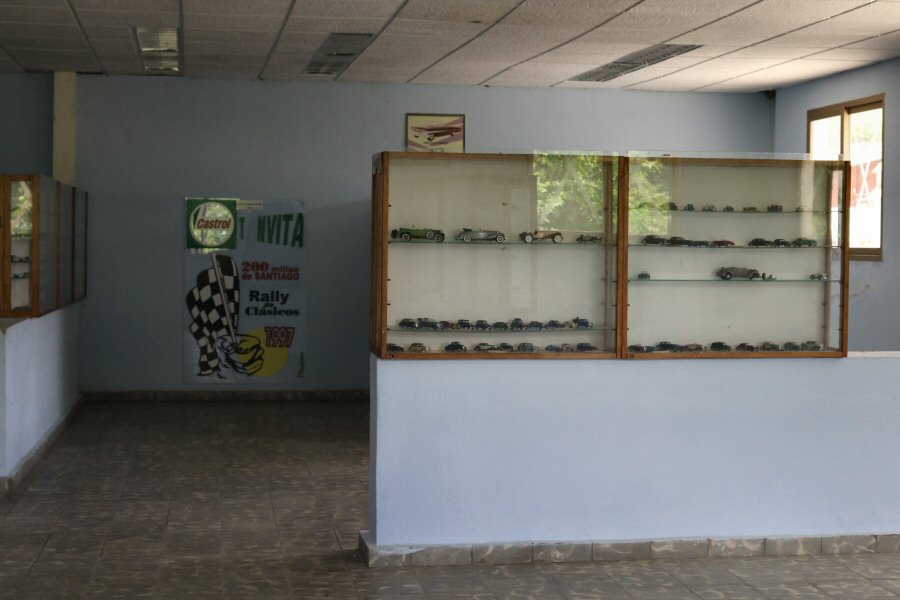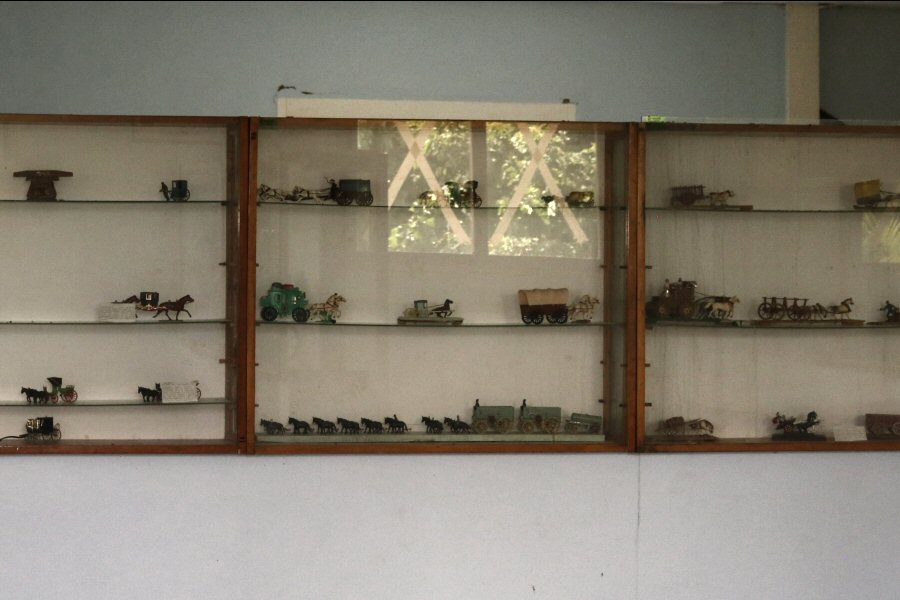Museo Nacional del Transporte is on the Carretera Baconao, about 4 km east of the Valle de Prehistoria
daily 08:00- 17:00


About 4 km east of the Valle de Prehistoria you will
come cross one of the Baconao’s biggest attractions, the Museo
Nacional del Transporte, that has a huge collection of miniature
cars, as well as a group of vintage cars that were special in
their time or belonged to outstanding figures of the past and
today.
More than 2.700 miniature cars and 44 cars in real size
are exhibited in the museum that occupies about 2.000 m2.
The museum allows us to follow the development of the motor
vehicle industry, from the invention of the rubber wheel up to
the modern cars. For example, you can find the Varria de Cugnot,
the first motor vehicle equipped with a steam boiler that was
operating the vertical cylinders.
The close replica of the car of Vladimir Ilyich Lenin,
the car of Hirohito, the emperor of Japan, the cars that
belonged to Adolf Hitler (one 1938 model Mercedes, the other
1941 model), a 1939 model Packard that belonged to Stalin and a
1912 model Ford that you can see in the movies of Charles
Chaplin, increase the value of the collection. 1956 model Ford
Thunderbird of Rosita Fornés, Cuban singer and film actress, and
1962 model Cadillac of Beny Moré, Cuban singer, bandleader, and
songwriter, as well 1951 model Chevrolet that Raúl Castro drove
at the time of the assault on Moncada barracks, and the 1929
model Ford Roadster belonging to Alina Ruz, Fidel Castro’s
mother, are visited mostly by the Cuban people. To considerable
interest is the manufactured Cuban car, known as Maya Cuba.
Some cars that were produced in limited number, like 1954 model
Buick Skylark and 1957 model Cadillac Dorado, can be seen in the
museum.
The cars pulled by the humans to build the famous Greek
Parthenon in Athens, the Eskimo sleighs, Red Cross cars,
firefighters, steam engines reflect that the museum embraces the
universal culture.
The huge collection of the miniature vehicles, numerous
means of transport from all eras, gives the impression of being
inside a fantasy world; a feature that makes the museum a space
recommended to all children.
All visitors that leave the museum sign a book at the
exit by making notes about that what they feel.
It is said that the first car that rolled through the streets of Santiago was a locomobile steam car. It was brought to the city by John R. Brooke, the first military governor of Cuba imposed by the United States, from New York on May 30, 1902. He could drive it only through the paved roads that could be traveled in those days.
